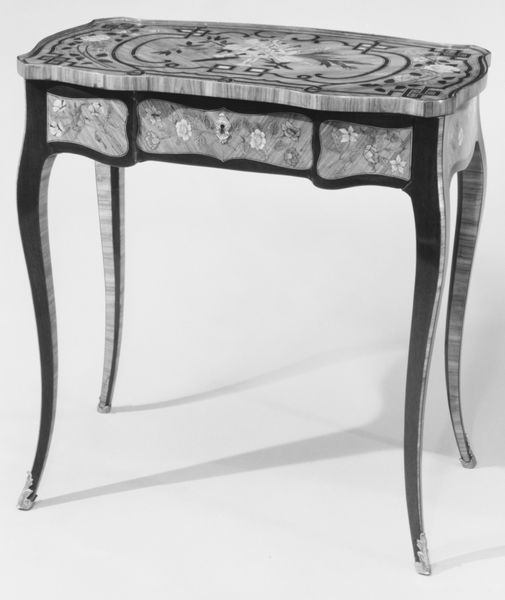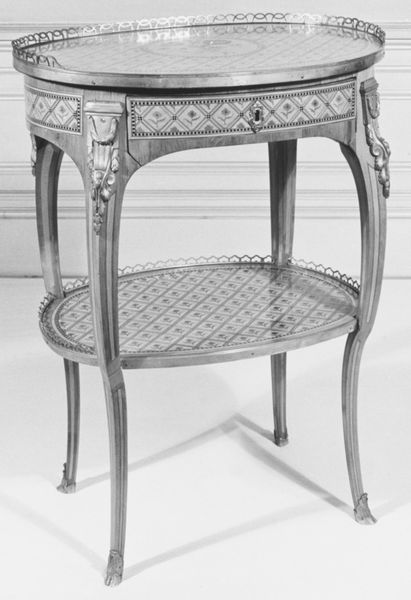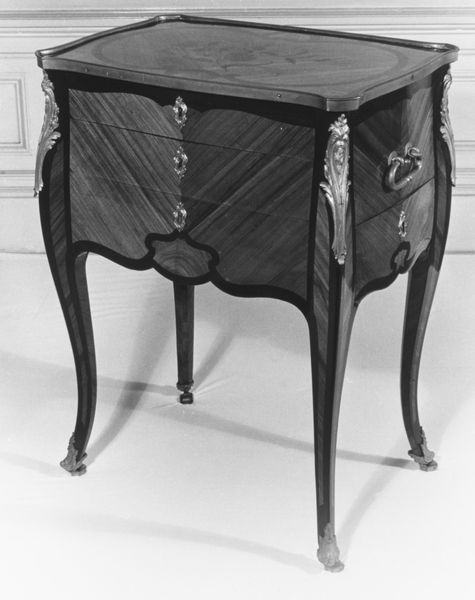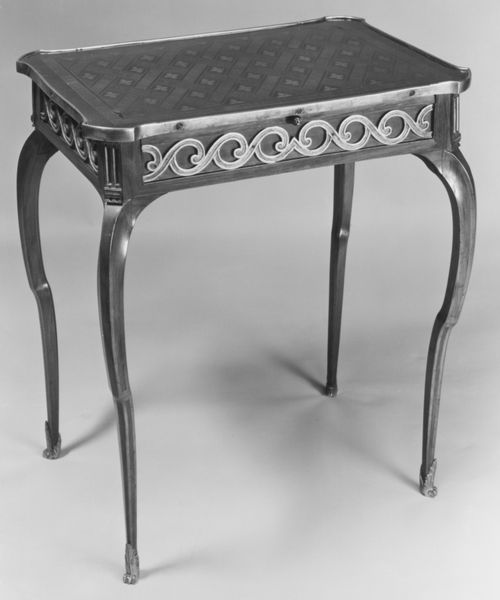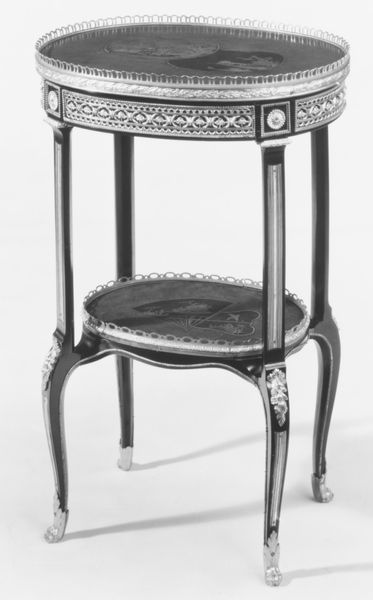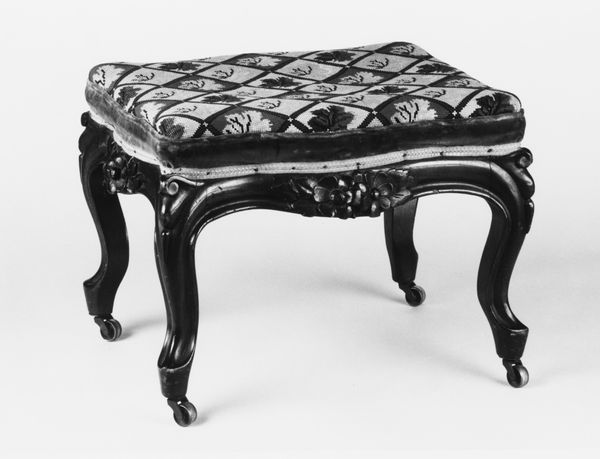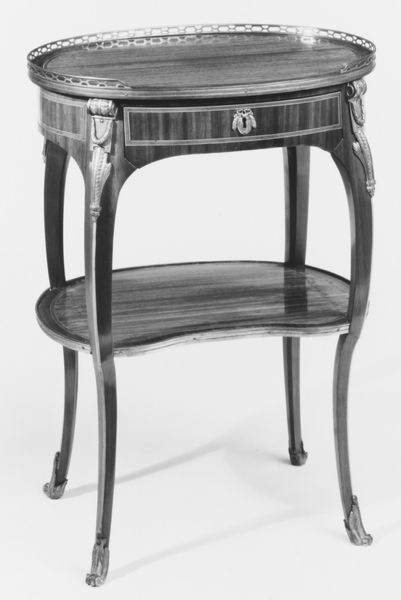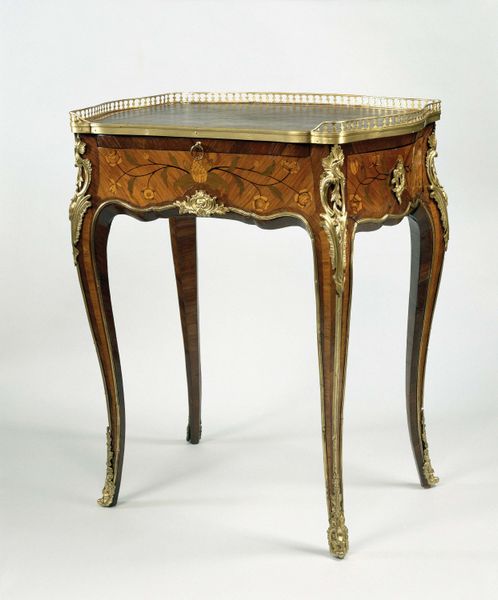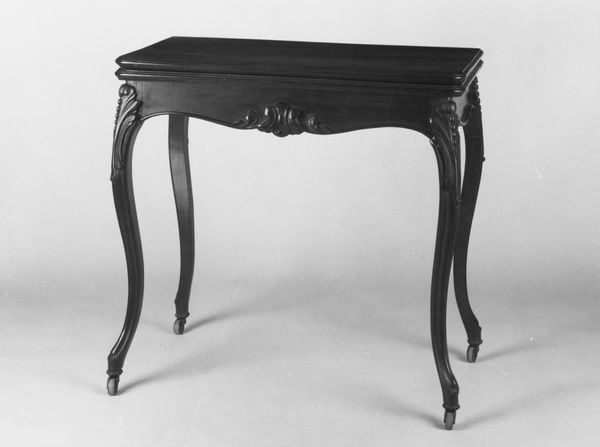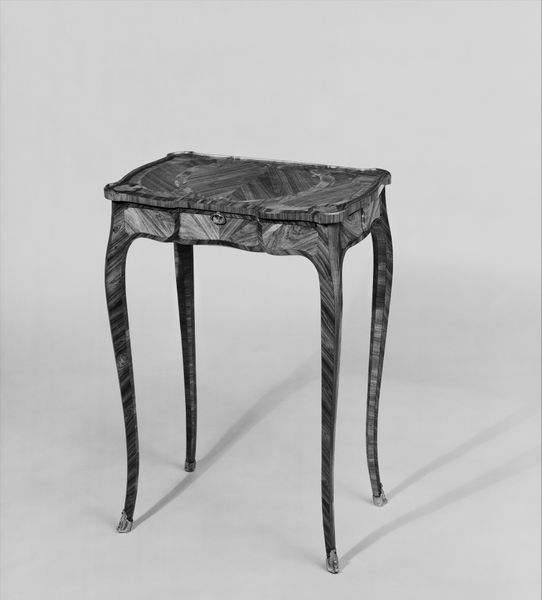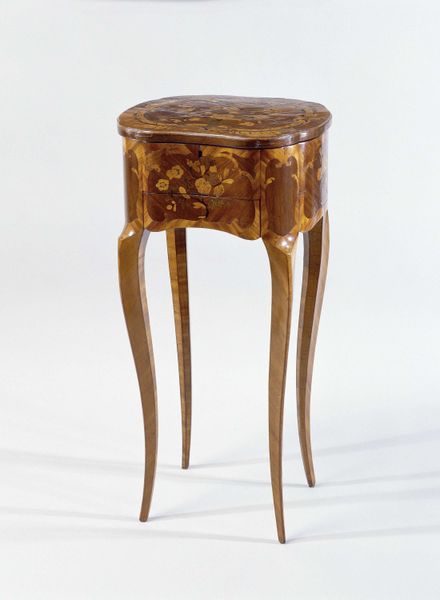
metal, sculpture, wood
#
wood texture
#
metal
#
sculpture
#
furniture
#
sculpture
#
wood
#
decorative-art
#
rococo
Dimensions: 28 1/2 × 15 3/4 in. (72.4 × 40 cm)
Copyright: Public Domain
Curator: Allow me to introduce this "Oblong Table" crafted from wood and metal, dating back to the period between 1760 and 1770. It's currently held here at the Metropolitan Museum of Art. Editor: It has a beautiful silhouette. There is a remarkable lightness despite the dense materiality, wood being the key here, a kind of upward movement conveyed through those curved legs. I notice how each part connects, and its detailing shows purposefulness, creating rhythm. Curator: Indeed, the piece exemplifies the Rococo style through and through. The shape and structure of the table is definitely notable here. I can imagine this gracing a lavish 18th-century salon. Its placement wasn’t arbitrary; these pieces signaled a move towards lighter, more ornamental forms. The elite wanted to separate themselves from traditional designs of their furniture. Editor: The question remains, however, how well does this "Oblong Table" conform to more established furniture typologies, or is it creating a space that is utterly its own through design? And if it seeks differentiation, why? The marquetry on the drawer and legs appears deliberate in breaking patterns that would normally emerge. This object speaks against any formal definition through structure. Curator: Absolutely, this particular style of ornamentation serves a purpose. I interpret its composition through Lacan’s ideas around mirrors: objects mirror their observers. The question here isn't what is being observed, but how those surfaces define space, reflect back notions of luxury, of good taste, wealth and ultimately political power? Editor: Yes. But I find it too decadent in an era defined by colonial conquest; this decadence would require material conditions wrought through terrible violence. I understand beauty doesn't automatically signal morality, and I enjoy how the composition has defied formalistic constraints. Curator: Well, by interrogating the power structures mirrored in the material object, we hope it may help question not just aesthetics but our own worldviews, as well. Editor: I agree. It has to be this piece’s ability to push boundaries, defy clear categorisation and elicit such historical context. Its shape isn't random, after all; this speaks not just of design, but of larger structures.
Comments
No comments
Be the first to comment and join the conversation on the ultimate creative platform.
